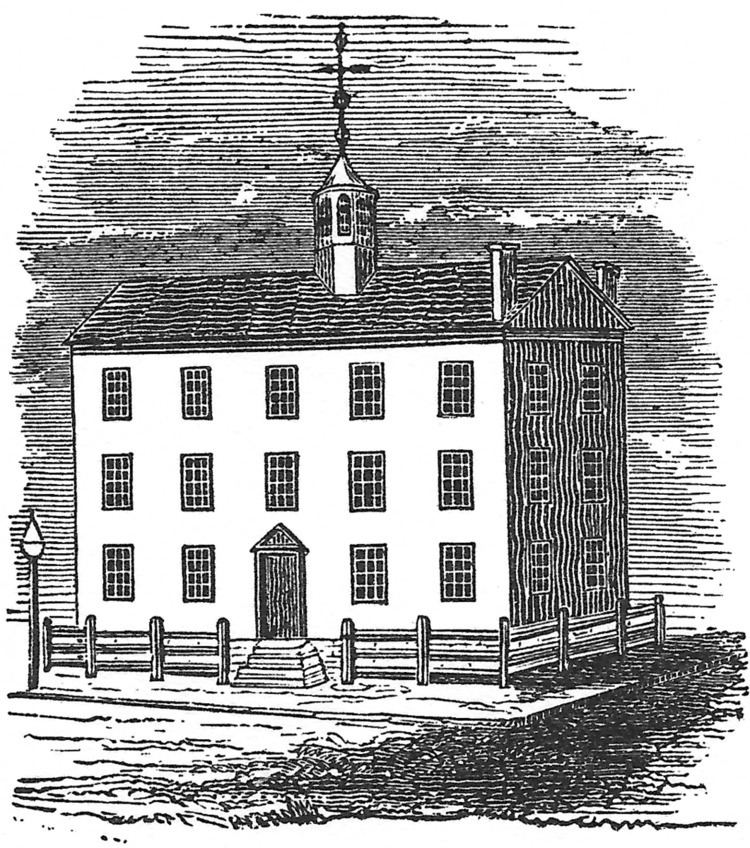Members 32 | Members 112 | |
 | ||
Term July 1, 1809 – June 30, 1810 Party control Democratic-Republican (25-7) | ||
The 33rd New York State Legislature, consisting of the New York State Senate and the New York State Assembly, met from January 30 to April 6, 1810, during the third year of Daniel D. Tompkins's governorship, in Albany.
Contents
Background
Under the provisions of the New York Constitution of 1777, amended by the Constitutional Convention of 1801, 32 Senators were elected on general tickets in the four senatorial districts for four-year terms. They were divided into four classes, and every year eight Senate seats came up for election. Assemblymen were elected countywide on general tickets to a one-year term, the whole Assembly being renewed annually.
In 1797, Albany was declared the State capital, and all subsequent Legislatures have been meeting there ever since. In 1799, the Legislature enacted that future Legislatures meet on the last Tuesday of January of each year unless called earlier by the governor.
In 1808, Cortland County was split from Onondaga County, and in 1809 was apportioned 1 seat in the Assembly, taken from Onondaga. In 1809, Schenectady County was split from Albany County, and was apportioned 2 seats in the Assembly, taken from Albany. Also in 1809, Sullivan County was split from Ulster County, but both remained in a joint Assembly district.
At this time the politicians were divided into two opposing political parties: the Federalists and the Democratic-Republicans.
At this time the major political controversy was the Embargo Act of 1807 which was supported by the Democratic-Republicans, but opposed by the Federalists. The Embargo was very unpopular and led to a revival of the Federalist Party which had been reduced to a small minority (without any member in the Senate from 1806 to 1808), but at the State election in April 1809 already won a majority of the Assembly seats.
Elections
The State election was held from April 25 to 27, 1809. Israel Carll (Southern D.), Johannes Bruyn, Samuel Haight (both Middle D.), Daniel Paris, John Stearns, (both Eastern D.), Amos Hall, Seth Phelps and Jonas Platt (all three Western D.) were elected to the Senate. Carll, Bruyn and Haight were Democratic-Republicans, the other five were Federalists.
Sessions
The Legislature met at the Old City Hall in Albany on January 30, 1810; and adjourned on April 6.
William North (Fed.) was elected Speaker with 59 votes against 45 for William Livingston (Dem.-Rep.). James Van Ingen (Fed.) was elected Clerk of the Assembly with 59 votes against 47 for the incumbent Daniel Rodman (Dem.-Rep.). The incumbent Thomas D. Donnelly (Dem.-Rep.) was re-elected Sergeant-at-Arms of the Assembly with 55 votes against 49 for Jacob C. Cuyler (Fed.).
On February 8, the Legislature elected Abraham G. Lansing (Fed.) to succeed David Thomas (Dem.-Rep.) as New York State Treasurer.
On March 13, 1810, State Senator Jonas Platt presented his project for a bipartisan Canal Commission to the State Legislature, and two days later the Legislature appointed Gouverneur Morris, Assemblyman Stephen Van Rensselaer, Speaker William North, Thomas Eddy (all four Fed.), State Senator DeWitt Clinton, Surveyor General Simeon DeWitt and Congressman Peter B. Porter (all three Dem.-Rep.) a "Commission to Explore a Route for a Canal to Lake Erie, and Report".
Districts
Members
The asterisk (*) denotes members of the previous Legislature who continued in office as members of this Legislature.
Employees
Assemblymen
The asterisk (*) denotes members of the previous Legislature who continued as members of this Legislature. Nathaniel Locke changed from the Senate to the Assembly.
